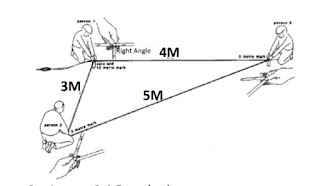HONEYCOMBS IN CONCRETE AND REMEDIES
HONEYCOMBS IN CONCRETE AND REMEDIES
Honeycombs are hollow spaces and cavities left in concrete mass on a surface or inside the concrete mass where concrete could not reach. These look like honey bees nest.When concrete is poured into the formwork it does not just flow in like water and fill up the forms to the top. The concrete has to be vibrated for ease of flow and to form a uniform surface. If it is not vibrated properly it may leave voids exposing the aggregate.The surface on concrete appears as a rough, pitted with voids in concrete resulting incomplete filling with the gap between the aggregates of the concrete against the formwork.Such type of surface and texture on concrete resemblance like a Honeycomb in a beehive of Honey Bee.This scenario can happen on any structural element- Columns, Beams,, Lift Walls, Foundation of any type, etc.Honeycombs which are on sides are visible to naked eyes and can be detected easily as soon shuttering is removed. Honeycombs that are inside the mass of concrete can only be detected by advanced techniques like ultrasonic testing etc.
Honeycomb is due to non-reaching of concrete to all places due to which cavities and hallow pockets are created, the main reasons are:
1) Improper vibration during the concrete.
2) Less cover to reinforcement bars
3) Use of very stiff concrete (this can be avoided by controlling water as per slump test).
4) Places like the junction of the beam to beam to column and to one or more beams are the typical spots where honeycombs are observed. This is due to the jumbling of reinforcement of beams and column rods at one place; special attention is required at such place during concreting and vibrating.
5) The presence of more percentage of the bigger size of aggregate in concrete also prevents concrete to fill narrow spaces between the reinforcement rods.
Remedies for Honeycombs in Concrete
Strictly speaking, wherever honeycombs are observer concrete should be broken and the portion should be re concreted after applying grouting chemicals to the old surface. Honeycombs as a defect not only reduce the load-bearing capacity but water finds an easy way to reinforcement rods and rusting and corrosion starts. Corrosion is a process that continues through reinforcement rods even in good concrete, this results in losing grip between rods and concrete, which is very dangerous to the safety and life of concrete structures. R.C.C. structures have failed within 20 or 30 years of their construction which is less than half their projected life. Especially no risk should be taken in case of columns, Machine foundations, Rafts, Beams, etc., where breaking and recasting is the only best way.
In the case of honeycombs on surface pressure grouting with cement-based chemicals that are non-shrinkable can be adopted after taking the opinion of the designer and acting as per his/her advice.
It will not be out of context to point out that contractors and their supervisors are in the habit of hiding honeycombs by applying super facially cement plaster on the honeycombs, hence site engineer must be very cautious.
At places of the junction of columns and beams, concrete with strictly 20mm and down aggregates should be used with slightly more water and cement to avoid honeycombs. Taping with a wooden hammer the sides of shuttering from outs side during concreting and vibrating will help to minimize honeycombs to a great extent in the case of columns and beams. Use of thinner needle says 25mm or less with vibrator at intricate places of concreting will also help in reducing honeycombs.

Comments
Post a Comment